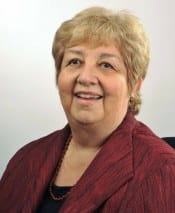How can we better involve patients and the public in healthcare decisions?
15 Aug 2016
Ros Levenson

In the medical profession, PPI has seemingly gone from ‘forbidden’ to ‘compulsory’, while patients and the wider public now routinely expect to be involved in their own care and in planning for the future in a variety of ways. And surgeons, who used to have a reputation for a ‘doctor knows best’ attitude have been amongst the most enthusiastic champions of presenting information to patients in new ways in order to empower them.
But there is still a long way to go. The idea of medical professionalism constantly changes, and with it, the relationship between doctors and patients and the public changes too.
So there is still work to do to eliminate four key potential obstacles or risks to effective involvement.
Number one is tokenism – rarer than it used to be, but still often seen, tokenism assumes that involving one person, possibly on one occasion ‘ticks the boxes’ for PPI.
Number two is an over-simplified idea of representativeness – the idea that one or two patients or lay people can somehow represent the glorious diversity of public opinion.
Number three is the notion that attending committees equates to participation. As a seasoned committee goer myself, I know it’s easy to fall into that trap, but we should never forget that attendance at committees will always be a minority sport and most people would prefer to be elsewhere. Fortunately, there are many other ways of involving people, both in person and by electronic means.
Number four is subtler – it consists of being loved to death by being invited or expected to be involved in way too many activities, far beyond what a patient or lay volunteer could actually do. This attitude may be well-meaning, but professionals need to work with lay people to work out how their partnership can best develop and thrive. If this isn’t done as a matter of course, all parties are likely to become frustrated.
Involving lay people, whether as patients, carers or as members of the wider community, should be a continuing process and not an ‘event’. It is a bit like continuing professional development – always ongoing, always offering new challenges and always suggesting new ways of working. From what I’ve seen in the College so far, I know that we are all committed to building on the excellent work that has taken place to date and I hope that, together we can further develop new ways of building genuine partnerships between surgeons and those whom they serve.
I would be very interested to hear from you how you think we can do this.
Ros Levenson is chair of the Royal College of Surgeons' Patient and Lay Group.
